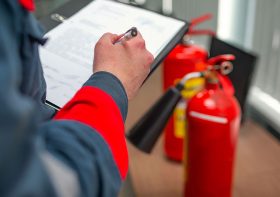Understanding Fatigue Testing: A Key to Ensuring Material Durability

In the world of engineering and material science, understanding how materials behave under repeated stress is critical to ensuring their longevity and safety. This is where fatigue testing comes into play. Fatigue testing is a fundamental process used to evaluate the durability of materials, components, and structures when subjected to cyclic loading over time. By simulating real-world conditions in a controlled environment, fatigue testing helps engineers predict failure points and improve product design. In this article, we will explore the concept of fatigue testing, its importance, methods, and applications across various industries.
What is Fatigue Testing?
Fatigue testing is a specialized technique used to determine the ability of a material or component to withstand repeated or fluctuating loads without failing. Unlike static load tests that measure a material’s strength under constant pressure, fatigue testing focuses on how materials degrade over time due to cyclical stresses. These stresses can be caused by factors such as vibration, thermal expansion, or mechanical movement.
The primary goal of fatigue testing is to identify the fatigue limit —the maximum stress a material can endure for an infinite number of cycles without breaking. For many materials, there is no true fatigue limit, but rather a threshold beyond which failure becomes inevitable after a certain number of cycles. This information is crucial for designing products that are safe, reliable, and cost-effective.
Why is Fatigue Testing Important?
Fatigue failure is one of the most common causes of structural breakdowns in both industrial and consumer applications. Unlike sudden fractures caused by excessive force, fatigue failures occur gradually, often starting with microscopic cracks that grow larger over time. If left undetected, these cracks can lead to catastrophic failures, posing significant risks to human life and property.
Here are some key reasons why fatigue testing is essential:
- Safety Assurance : Fatigue testing ensures that critical components, such as aircraft wings, bridges, and medical implants, remain safe throughout their expected service life.
- Cost Efficiency : Identifying potential weak points early in the design phase allows manufacturers to optimize materials and reduce maintenance costs.
- Regulatory Compliance : Many industries have strict regulations requiring fatigue testing to meet safety standards.
- Design Optimization : By understanding how materials behave under cyclic loading, engineers can refine designs to enhance performance and durability.
- Predictive Maintenance : Fatigue data helps establish maintenance schedules, minimizing downtime and extending the lifespan of equipment.
Types of Fatigue Testing Methods
There are several methods of conducting fatigue tests, each tailored to specific types of materials and applications. Below are the most commonly used techniques:
1. Axial Fatigue Testing
Axial fatigue testing involves applying tensile and compressive forces along the axis of a specimen. This method is ideal for evaluating metals, polymers, and composites. The test provides insights into how a material responds to alternating stresses and helps determine its endurance limit.
2. Rotating Beam Fatigue Testing
In this method, a cylindrical specimen is subjected to bending stresses while it rotates at a constant speed. As the specimen spins, different parts of it experience varying levels of tension and compression. Rotating beam fatigue testing is particularly useful for assessing the fatigue properties of round bars and shafts.
3. Torsional Fatigue Testing
Torsional fatigue testing applies twisting forces to a specimen to evaluate its resistance to shear stress. This method is commonly used for components like drive shafts and axles, which experience rotational motion during operation.
4. Thermal-Mechanical Fatigue (TMF) Testing
TMF testing combines mechanical loading with temperature variations to simulate real-world conditions where materials are exposed to both stress and thermal cycling. It is especially relevant for aerospace and automotive applications.
5. Vibration Fatigue Testing
This method subjects components to vibrational forces similar to those experienced in operational environments. Vibration fatigue testing is widely used in industries such as transportation and electronics to assess the reliability of assemblies.
6. High-Cycle vs. Low-Cycle Fatigue Testing
- High-cycle fatigue (HCF) refers to situations where materials undergo millions of cycles at relatively low stress levels.
- Low-cycle fatigue (LCF) occurs when materials experience fewer cycles but at higher stress levels, often leading to plastic deformation.
Each type of fatigue testing offers unique insights into material behavior, making them indispensable tools for engineers.
Applications of Fatigue Testing Across Industries
Fatigue testing plays a vital role in numerous sectors, ensuring the reliability and safety of critical systems. Some notable applications include:
1. Aerospace Industry
Aircraft components, such as turbine blades, landing gear, and fuselage panels, must endure extreme conditions, including high-altitude pressures and frequent takeoffs and landings. Fatigue testing ensures these parts can handle millions of flight cycles without compromising passenger safety.
2. Automotive Sector
From engine blocks to suspension systems, automotive components are constantly subjected to dynamic forces. Fatigue testing helps manufacturers develop vehicles that can withstand years of use while maintaining optimal performance.
3. Construction and Infrastructure
Bridges, buildings, and pipelines are all susceptible to fatigue due to environmental factors like wind, traffic, and temperature fluctuations. Fatigue testing enables engineers to design structures capable of enduring decades of wear and tear.
4. Medical Devices
Implantable devices, such as pacemakers and artificial joints, require rigorous fatigue testing to ensure they function reliably within the human body. Failure of these devices could have severe consequences for patients.
5. Energy Sector
Power plants, wind turbines, and oil rigs rely on fatigue-resistant materials to operate efficiently under demanding conditions. Fatigue testing helps prevent costly breakdowns and ensures uninterrupted energy production.
Factors Influencing Fatigue Life
Several factors influence how long a material can endure cyclic loading before failing. Understanding these variables is crucial for accurate fatigue analysis:
- Material Properties : The composition, microstructure, and surface finish of a material significantly affect its fatigue resistance.
- Stress Amplitude : Higher stress amplitudes generally result in shorter fatigue lives.
- Frequency of Cycles : The rate at which loads are applied can impact crack initiation and propagation.
- Environmental Conditions : Corrosive environments, humidity, and temperature extremes can accelerate fatigue damage.
- Surface Defects : Imperfections such as scratches, notches, or weld seams serve as stress concentrators, reducing fatigue life.
By accounting for these factors, engineers can make informed decisions about material selection and design modifications.
Advancements in Fatigue Testing Technology
Recent advancements in technology have enhanced the accuracy and efficiency of fatigue testing. Some noteworthy developments include:
- Digital Simulation Tools : Finite Element Analysis (FEA) software allows engineers to simulate fatigue scenarios virtually, reducing the need for physical prototypes.
- Real-Time Monitoring : Sensors and data acquisition systems enable continuous monitoring of specimens during testing, providing detailed insights into crack growth and failure mechanisms.
- Non-Destructive Testing (NDT) : Techniques like ultrasonic inspection and X-ray imaging help detect internal defects without damaging the specimen.
- Machine Learning Algorithms : AI-driven models can analyze vast amounts of fatigue data to predict failure patterns and optimize designs.
These innovations not only streamline the testing process but also pave the way for more sustainable and innovative solutions.
Challenges in Fatigue Testing
While fatigue testing is invaluable, it does come with challenges:
- Time-Consuming : Conducting fatigue tests, especially for high-cycle scenarios, can take weeks or even months.
- Costly Equipment : High-quality fatigue testing machines and sensors require significant investment.
- Complexity of Real-World Scenarios : Simulating every possible condition a material might encounter in the field is nearly impossible.
Despite these hurdles, ongoing research and technological breakthroughs continue to address these limitations, making fatigue testing more accessible and effective.
Conclusion
Fatigue testing is an indispensable tool in modern engineering, offering unparalleled insights into material durability and reliability. By identifying weaknesses before they become catastrophic failures, fatigue testing safeguards lives, reduces costs, and enhances innovation across multiple industries. Whether you’re designing an airplane wing, a bridge, or a medical implant, understanding the principles of fatigue testing empowers you to create safer, more resilient products.
As technology continues to evolve, so too will the methods and tools available for fatigue testing. Engineers and scientists must stay abreast of these advancements to push the boundaries of what’s possible in material science. Ultimately, fatigue testing isn’t just about preventing failures—it’s about building a future where our creations stand the test of time.



